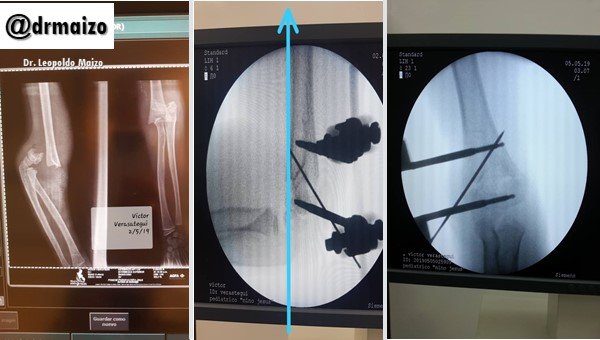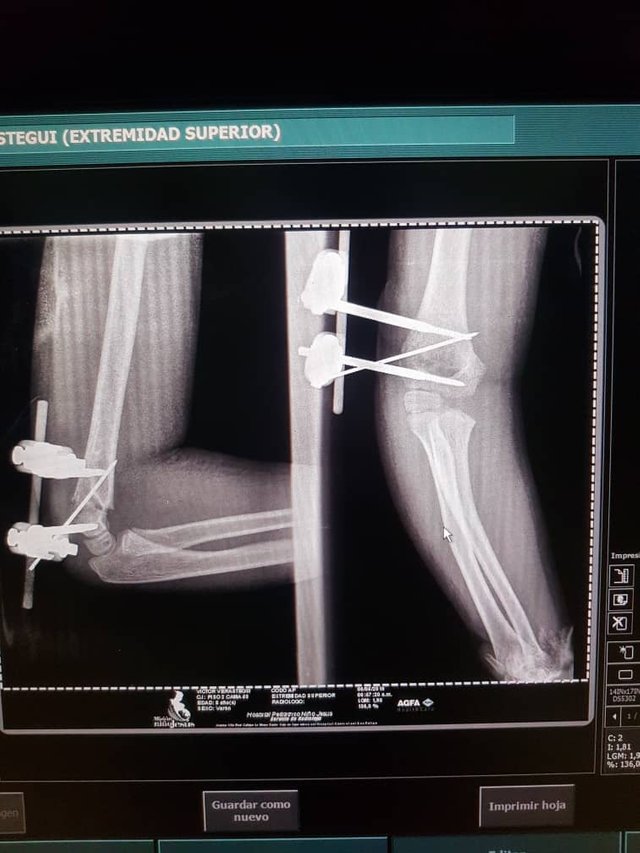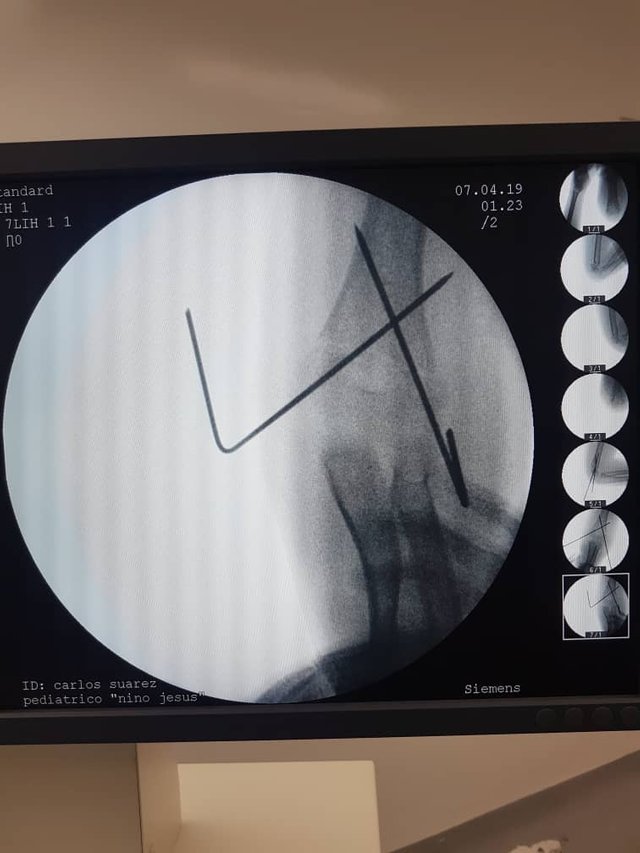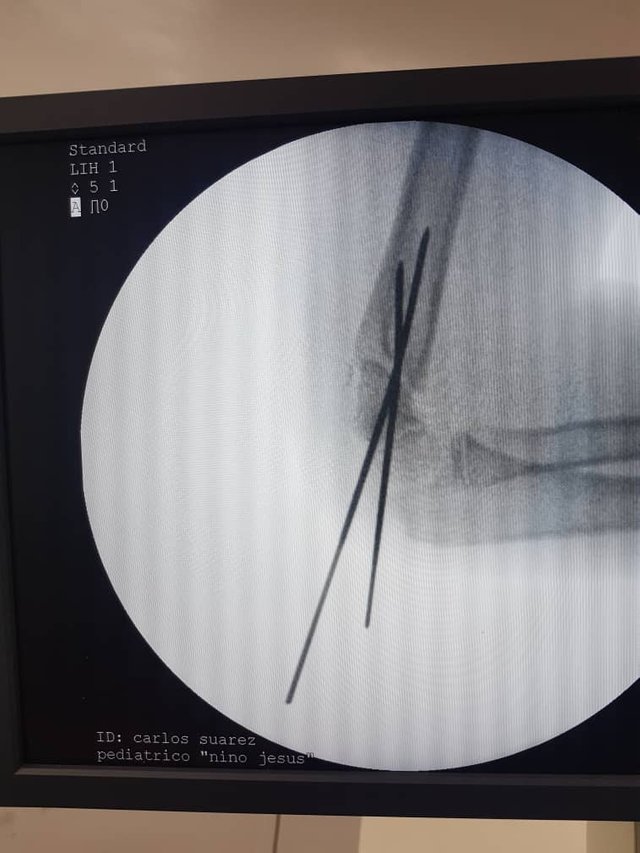
Supracondilar elbow fracture
The supracondilar elbow fracture of the humerus in children is very frequent in the first decade of life and needs a precise treatment, in order to obtain a satisfactory result in a bone that is in formation. The main concern in the treatment of supracondylar fractures of the elbow in the child is to control the rotation of the distal fragment. When the physician detects rotation, in order to reduce the rotated distal fragment, the proximal fragment must be controlled by placing the shoulder in an anatomical position and performing the Robert Jones maneuver or by inserting a Steinman nail or Kirshner needle into the diaphysis of the proximal humerus to reduce it until the anatomical position of the humerus is achieved.


Production mechanism
If the child falls with the shoulder in abduction and the forearm in pronation, the shoulder does not rotate and the fracture occurs and, although the distal fragment may move laterally, no rotation occurs. On the contrary, when the child falls in front of its axis, the shoulder is adducted, the elbow is hyperextensioned and the forearm is placed in supination, producing a fracture that can be displaced medially and the shoulder could rotate internally. When the lateral radiograph is taken, the distal fragment will be seen completely lateral and the proximal fragment rotated. If the forearm is in pronation and the weight of the body rotates with the shoulder, a large lateral rotation of the proximal fragment can occur and often makes reduction difficult. But most of the time, the child will fall on the humerus axis with the forearm supinated, and the rotation of the proximal fragment is internal.
Fractures will most often occur in the weakest portion of the humeral palette, which is the imaginary interepicondylea line, limited by the lateral and medial abutments of the humeral palette; a thin interposing wall that constitutes the bottom of both cavities, the coronoid fossa and the olecranean fossa, the weakest point of the entire bone. When the downward force and the upward force of the rebound collide at this point, it fractures and other solicitations intervene to decide the displacement and rotation.



Treatment
The most commonly used method is closed reduction and immobilization with plaster; however, it is considered that this procedure should be reviewed and that it is necessary to increase the number of cases treated with closed reduction and fixation with percutaneous Kirschner needles, provided that open reduction is not indicated. Because closed reduction under image intensifier and percutaneous fixation with Kirschner cross as treatment of displaced supracondylar fractures of elbow type III, is very safe in children, very effective in time and cost, also provides good stability compared to reduction and plaster.
The epitrochlear and epicondyle muscles, when inserted in the distal fragment, do not exert any effect to maintain stability after reduction. However, a CT-3D of the elbow and shoulder is always recommended as it is the best test to establish the rotation of the supracondilea humeral fracture of the infant elbow.
Dr. Leopoldo Maizo - Orthopedic Surgeon


Firma diseñada por @themonkeyzuelans, contáctalos vía Discord "themonkeyzuelans#9087"
Great projects from the Steemit community:
- My Fundition campaign: https://fundition.io/#!/@drmaizo/6f88ggj8h



.png)
nothing to add on this my friend. this EXACTLY how we see it as well!
Downvoting a post can decrease pending rewards and make it less visible. Common reasons:
Submit
Thank you @karinxxl, its great that! ;)
Downvoting a post can decrease pending rewards and make it less visible. Common reasons:
Submit
Congratulations @drmaizo! You have completed the following achievement on the Steem blockchain and have been rewarded with new badge(s) :
You can view your badges on your Steem Board and compare to others on the Steem Ranking
If you no longer want to receive notifications, reply to this comment with the word
STOPDo not miss the last post from @steemitboard:
Vote for @Steemitboard as a witness to get one more award and increased upvotes!
Downvoting a post can decrease pending rewards and make it less visible. Common reasons:
Submit